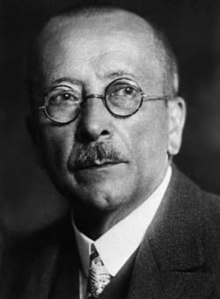Microchemistry
The micro chemical or microanalysis describes methods for the quantitative or qualitative determination of chemical compounds or elements in small quantities of sample materials. Before their introduction, more or less large flasks and beakers were used, which did not allow the investigation of the smallest sample quantities. However, this was necessary in medical research and forensics .
The development of special instruments, techniques and procedures by Fritz Pregl , for example, made it possible for the first time to examine small tissue samples for medical diagnostics . Most of Pregl's work was carried out in Graz , where the chemical-analytical institute of the Technical University until 1967 was called the "Institute for Microchemistry". Fritz Feigl was a pioneer of chromatography through the " spot analysis " .
Depending on the amount of substance required, a distinction is made in microanalysis between
- Semi-microanalysis with 10 to 20 mg,
- the actual microanalysis with 1 to 10 mg,
- Ultra-microanalysis 10 -3 to 10 -2 mg,
- Sub-microanalysis 10 −6 to 10 −5 mg and
- Sub-ultra microanalysis 10 −9 to 10 −8 mg.
The detection limits of many substances could be reduced significantly through the use of modern physicochemical measurement methods such as chromatography, absorption measurements , the use of radioactive isotopes or through highly sensitive color reactions.
